When it comes to fantastic beasts, shapeshifters of all sorts are a double delight. They’re beasts, and they’re human. They take on the powers of animals either voluntarily or otherwise. In many traditions they’re villains: the transformed beast loses all connection to humanity and becomes pure predator.
Werewolf by Night is a movie werewolf rather than a true wolf shifter. His shifted form is halfway between human and wolf—as his Marvel character summary puts it, “he transforms into the feral hybrid known as Werewolf by Night and becomes a howling, hirsute hero.” His name, by his own choice, is Jack Russell.
Arf.
This article contains spoilers for the Disney+ Special, Werewolf by Night
The Disney special named after him is a brief (55 minutes) confection, a little jewel of the monster genre. It’s filmed in black and white like classic horror films of the Thirties and Forties, and it tells a familiar story. Legendary monster hunter Ulysses Bloodstone is dead. The jewel that was his weapon against monsters of all sorts, the Bloodstone, will pass on to one of his monster-hunting extended family, though a trial of skill and guile.
All the hunters gathered in the Bloodstone mansion must track down and kill a monster. The Bloodstone is bound to that monster’s body. The hunter who kills the monster will win the stone and become the heir to the Bloodstone legacy.
The twist is that one of the hunters, Jack, who has a legendary record of kills, is a monster himself. He’s a werewolf. But that’s not all. The monster who carries the bloodstone is Jack’s friend. His name is Ted.
We don’t find out in the special who Ted is. He looks like a huge, shambling, tentacle-faced Cthulhu-zoid monster. The Bloodstone weakens him but also irritates him. Really, really irritates him. That’s the point. Pissed-off monster is deadly dangerous monster.
By the time we meet Ted, we’ve seen what truly horrible people the hunters are. Even the late Ulysses Bloodstone weighs in in the form of his reanimated corpse. He sets the challenge, gives a speech that ends in a howler of a pun, and vanishes back into his coffin.
Most horrible of all is his second wife Verussa. I kept breaking into giggles because she sounded to me like the Matchmaker as voiced by Miriam Margolyes in the animated Mulan. The same raspy, nasal voice. The same deliberate rhythms. I expected her to drone, “Now pour the tea.”
She even looks like the tea-stained and raging Matchmaker during the scene in which she tries to destroy Jack, with streams of makeup straggling from her eyes down her face. Sadly, she never bellows, “You will never bring your family honor!”
But it’s implied. The true heir of the stone, Ulysses’ daughter by his first wife, has been gone for twenty years. She has refused to be trained by her father, and she is not a friend to her stepmother. She has to earn the stone like everybody else, rather than simply showing up and claiming it.
Buy the Book
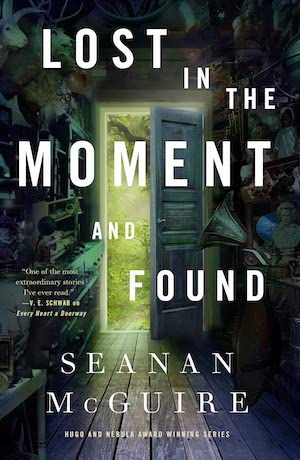

Lost in the Moment and Found
By this time it’s clear that the hunters are the real monsters. Jack is genuinely dangerous in werewolf form, but he’s figured out ways to defuse the worst of it. He can memorize the scent of a person while he’s in human form, and when he’s transformed, he will do his best to avoid hurting that person. He tries to do good, and he only destroys truly bad monsters, notably vampires.
Ted, the monster of terrifying aspect, turns out to be a sweet, kind creature who only does violence when forced to it. In the wider Marvel universe he’s a bit of a mad scientist, who falls into a dimensional rift and ends up being transformed into a swamp creature with cosmic powers. He’s a plant rather than an animal, and he’s a gentle soul. Jack spends a great deal of time extricating him from sticky situations.
This is about as sticky as it gets. Jack is not here to win the Bloodstone—it knocks him flat as it does every other monster it’s designed to detect and weaken—but to save Ted. He allies with Elsa to liberate Ted from the stone and eliminate the rest of the hunters, including the ineffable Verussa.
It’s a lovely little film. Though it has the atmosphere of old-timey horror movies, it has a much more contemporary sensibility. There’s plenty of violence and no little amount of gloating and villainy, but like Ted, it has a gentle heart.
Jack is a more or less garden-variety wolf-man. Ted is a rumbling, shambling sweetheart of a thing. In fact his hero name is Man-Thing. Not to be confused, I’m sure, with Swamp Thing. Though he is a denizen of the swamp—the Everglades, to be precise.
I wonder if he’ll appear in later entries in the Marvel universe, and if so, if he’ll have things to say (or gently growl) about climate change and saving the earth. If he does, I’m sure Jack will be there to rescue him when and as needed, in the way of all good canines.
Judith Tarr is a lifelong horse person. She supports her habit by writing works of fantasy and science fiction as well as historical novels, many of which have been published as ebooks. She’s written a primer for writers who want to write about horses: Writing Horses: The Fine Art of Getting It Right. She lives near Tucson, Arizona with a herd of Lipizzans, a clowder of cats, and a blue-eyed dog.










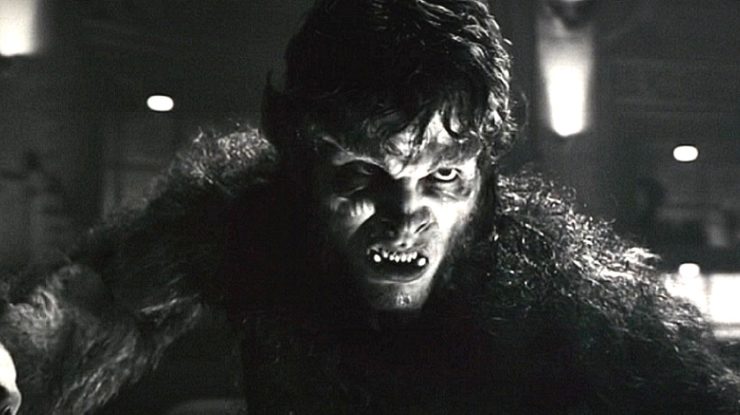
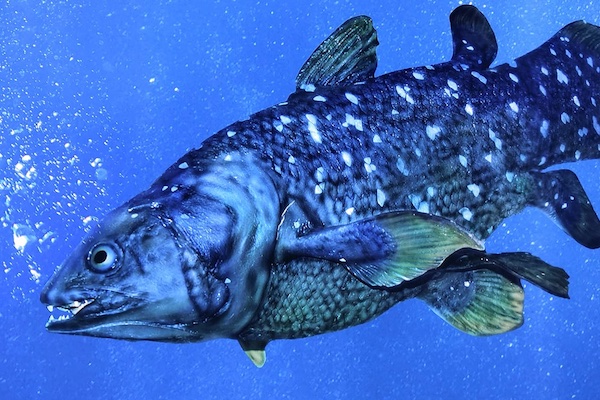
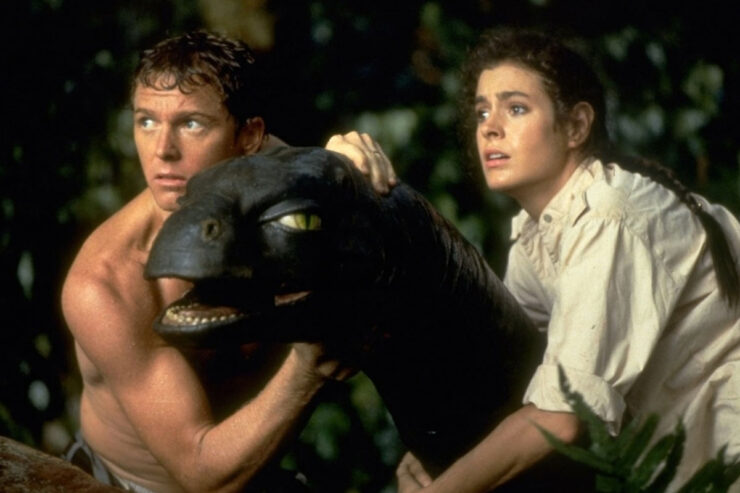

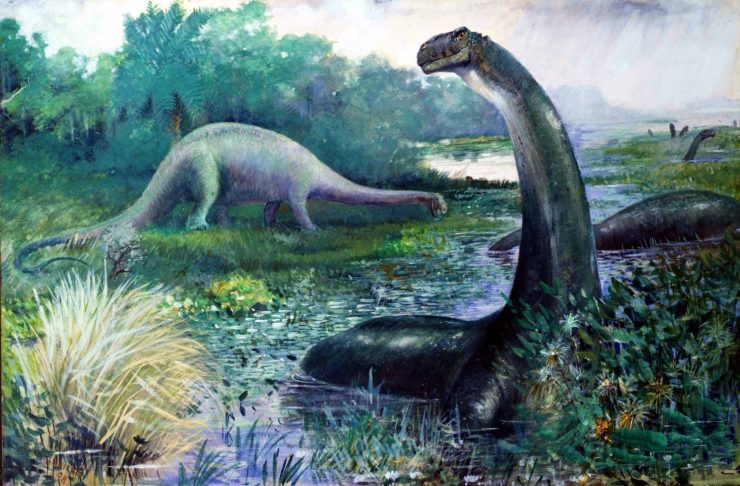
It was nicely retro. It did have a classic B-movie feel — a bunch of creepy people come together in a creepy place for a macabre ritual, and there’s a dead host and his sinister wife and the obedient butler. I guessed that the captive monster would turn out to be Man-Thing, but I didn’t quite anticipate his relationship with Jack.
Man-Thing/Ted was more expressive than I expected. From what little I’ve seen of the character in the comics, I got the sense of him (it?) as a more enigmatic and still figure, this eerie force of nature that no one realized had a human soul within. This version of him was almost cute.
I was expecting a full VFX transformation sequence and hoping they’d do it with American Werewolf in London-style practical effects rather than CGI, but instead they went old-school and just focused on Elsa’s terror as she watched the transformation that was left mostly to our imaginations, aside from shadows on the wall. Which is probably a lot scarier.
Still, despite the retro technique, there were indications that it was set in modern times, or nearly so. The most recent date of death in the crypt was 1961, and evidently Ulysses Bloodstone managed to survive a fair length of time beyond that. And the grunts’ shock prods looked like quite modern tech. Yet there was no sign of anyone having cell phones or anything.
Elsa’s fight choreography was good. I was particularly impressed by that move where she was on her back on the ground and somehow flipped herself smoothly up onto the raised path while still on her back. Or something like that. It was such an uusual move I’m not entirely sure how to describe it.
I wonder if there’s any deeper significance, beyond merely a stylistic choice, to the fact that the Bloodstone was the only thing that was in color for most of the special, and that once Elsa took possession of it, the color spread out from it to her and then to everything else. Maybe it represents how it’s augmented her senses and perceptions? Or maybe there’s something special about her and it coming together, bringing some new power into the world. Or maybe Giacchino just thought it looked cool.
Incidentally, despite what people assume, Gerry Conway’s choice to name the character Jack Russell was not an intentional dog pun. https://www.cbr.com/werewolf-by-night-jack-russell-pun-name-gerry-conway/
I feel like they really should have at least given it another half hour and made it a made-for-TV movie.
@1 The answer to the color thing is in the soundtrack. Judy Garland singing Over the Rainbow.
@3/capriole: I’m not talking about the mere fact that they transitioned to color at the end. That’s obvious enough. I’m wondering if there’s significance to the specific way they depicted the transition — the Bloodstone was the only thing in color throughout, then the color spread through Elsa once she took hold of it, and then the color spread out from her to the rest of the world. That makes me wonder if they were implying something about the Bloodstone and the importance of Elsa possessing it, as if that act triggered something with more global/cosmic significance.
Elsa Bloodstone! The Man-Thing!
I suppose that if this becomes a series a certain duck will show up too.
The show was great fun and very well constructed. I liked the fact that the hunters were more monstrous than their prey. There were all sorts of fun vibes drawn from the old monster movies, and for an old comic reader like me, tons of elements drawn from the old books.
In the days before superheroes, Marvel had a huge stable of monsters in their books. And all through the years, they have dabbled in bringing back those kind of adventures. Werewolf by Night appeared in the early 70s in a “try-out” title called Marvel Spotlight, where Marvel tried new characters before giving them a book of their own (the perennial favorite Ghost Rider also appeared in this title). Ulysses Bloodstone was a fascinating monster hunter who appeared in comics here and there (originally in Marvel Presents, another try-out title), and I was surprised when they killed him off. I remember a fun run of Captain America where he went on a quest to recover the Bloodstone shards, and to keep them out of Baron Zemo’s hands. Marvel then introduced Bloodstone’s daughter, the competent and powerful Elsa. I didn’t know what to think of the character at first, as she was abrasive, profane and hotheaded. But she grew on me, and now I enjoy seeing her whenever she appears in the comics. And Man-Thing is a great character (the show did a good job of showing his cruel powers but kind disposition).
I certainly hope, now that they are part of the MCU, we see lots more of Elsa, Jack and Man-Thing.
@@.-@ The use of color probably doesn’t have any cosmic significance, but possession of the bloodstone has a profound impact on the person who possesses it, so perhaps that is what the color was signifying. It grants superhuman strength, reflexes and perception, and near immortality. Ulysses Bloodstone, for example, was about 10,000 years old when he died. Of course the color might also simply signify that the story has reached a surprisingly happy ending for such a bloody tale.
@6/AlanBrown: “possession of the bloodstone has a profound impact on the person who possesses it, so perhaps that is what the color was signifying. It grants superhuman strength, reflexes and perception, and near immortality.”
Yeah, that’s the sort of thing I was thinking — that maybe the world turning to color when Elsa takes the stone symbolizes that the stone is expanding her perception and letting her sense the world in new ways.
Incidentally, the big Scottish monster hunter with the beard? That was Kirk Thatcher, aka “Punk on Bus” from Star Trek IV: The Voyage Home (and Picard season 2). He previously appeared in the MCU as “Punk on Street” in Spider-Man: Homecoming, an homage to his Trek role. And he narrated Michael Giacchino’s previous directorial effort, Star Trek Short Treks: “Ephraim and Dot.”
@6 Kurt Busiek was mentioning Ulysses only had seven appearances in the comics before he was killed off and Marvel substituted Elsa for him. I think that counts as a waste of a character, as certainly you could do a lot with that set up.
But for purposes of the MCU,, having the Bloodstone holder be long lived (but not necessarily immortal) is more useful given the very mortal actors that have to play the role. And there was more than enough hooks in Elsa to explore in mini series or crossovers…and I hope they do.
After Jack has gotten Elsa’s scent she asks him, “has it ever worked?”
And y’all…..
Gael Garcia Bernal”s one word answer of “once” is so gorgeously weighted down and fraught with feelings and a palpable sense of his emotional history, it’s impressive as hell and I want to know more.
I loved the changeover dots (also called cue marks) being used to signal the movement between the three acts, and my past-movie-theater-job-having-self LOVED seeing them for the nostalgia.
I think the guards are TVA agents. That awesome hallway fight, with the slowly closing door? My theory is that that was a doorway back to the TVA Nightmare Department (the one that Mobius invited Loki to burn down.) Though I’m not sure why their weapons were set to stun instead of prune, maybe the Hunt was set up with agreement/oversight by the Nightmare Dept of the TVA? So, you know, no pruning. My curiosity is percolating with ideas!
I wonder if we will see Jack and Elsa in season 2 of Moon Knight or Loki?
I enjoyed this a lot. Great atmosphere with a nice throwback feel.
Ted Sallis’ transformation into Man-Thing in the comics involved a chase to recreate the Super-Soldier serum back in 1971; I’ve seen complaints about that well being revisited too often in the MCU of late, which I don’t understand since along with attempts to create or purloin Stark-level weaponry and harness alien technology such efforts by various hands entirely make sense.
Ulysses Bloodstone also popped up in a too-short-lived 1998 monthly series literally titled Marvel Universe for a story set during the “Atlas Monster” era that largely involved aliens, unearthed prehistoric creatures, and the like rather than the Universal or Hammer style of supernatural beings that influenced this special. Other than Groot and Shang-Chi’s nod to Fin Fang Foom we haven’t really seen that sort of thing in the MCU but a Disney+ special homaging the UFO-panic, Red-scare days would be fun.
@10/Arben: “I’ve seen complaints about that well being revisited too often in the MCU of late, which I don’t understand since along with attempts to create or purloin Stark-level weaponry and harness alien technology such efforts by various hands entirely make sense.”
The complaints presumably aren’t about whether it makes sense in-universe, but whether it’s entertaining to the audience. Reusing the same plot device over and over can get tiresome, no matter how logical it is.